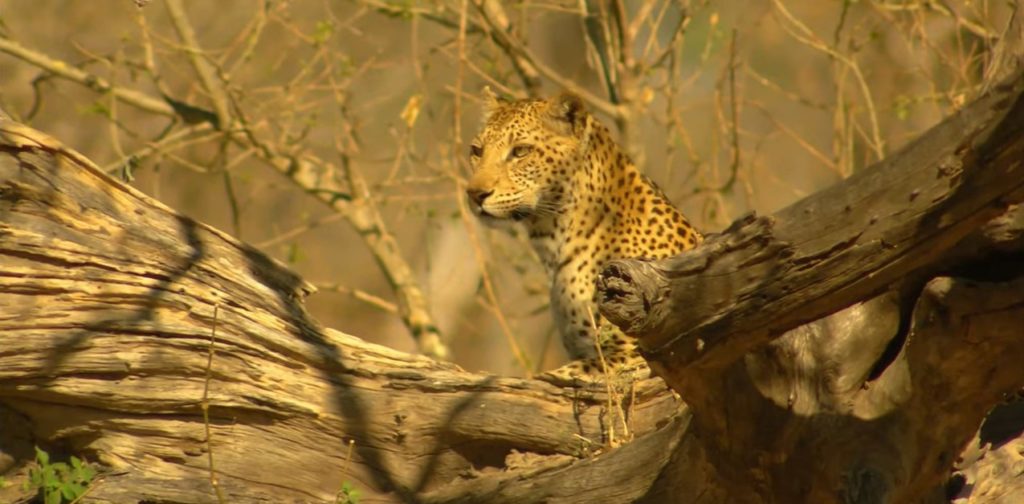A three-year-old boy was grabbed by a leopard in Queen Elizabeth National Park in Uganda on Friday. The toddler was with his nanny in an unfenced part of the park when the the leopard snatched him, dragging him into the bush.
They toddler’s remains have now been recovered, but a search has been mounted to find and capture the man-eating leopard.
The Attack
Wildlife Authority spokesperson Bashir Hangi explained, “The maid was not aware the child followed her. She heard the kid scream for help, she intervened but it was too late the leopard had vanished with it in the bush and a search was mounted until we got the skull the next day.”
Wild animals do not often eat humans, but once they begin, they usually don’t stop. Hangi explained why it’s so important to capture the leopard immediately, “The hunt is on with the intention of capturing the leopard and removing it from the wild because once it has eaten human flesh, the temptations are high to eat another human being, it becomes dangerous.”
The young boy’s father has publicly stated that he expects financial compensation. The father, Francis Manana Nabugyere, said, “I have not talked to them about the incident but I would expect something reasonable to compensate me, although my son’s life is gone.” The boy’s mother is a ranger at the park. The Wildlife Authority has provided a coffin for the boys remains.
The attack took place around 7:30 pm. Leopards are usually nocturnal hunters.
Man-Eating Leopard?
Leopards, and wild animals in general, do not usually prey on human beings. Leopards have been known to turn into man-eaters, but mostly under dire circumstances. When a leopard loses its natural habitat due to deforestation, and therefore its source of food, it may begin to prey on livestock, dogs, and eventually even humans.
Based on the speculation that leopards become man-eaters when they lose their natural habitat, researchers in India captured leopards and released them into forests, but this didn’t change much. Within a few months the leopards had returned to the sugarcane fields where they had been hunting humans and livestock alike. Even when transplanted far away, the leopards that had developed a taste for human flesh entered nearby villages and farms to prey on humans.
Researchers do not yet have a conclusive answer for why leopards may begin to prefer human flesh.
Leopards are not as likely to attack humans as tigers or lions, but leopard attacks are still prevalent in India and Nepal. A factor that makes leopards unique is that they do actively prey on the primate family, of which human beings are a part. Up to 80% of a leopard’s diet may rely on primates.
In addition to starvation and loss of habitat, injury is a common reason wild animals may attack humans. Although this seems to be true of lions, it does not seem to be the case with leopards. More than 79% of man-killing leopards were uninjured males. Interestingly, the vast majority of leopard attacks are carried out by male leopards.
Because leopards are masters of stealth, able to climb trees, and incredibly agile, once a leopard has become a man-eater, they are very difficult to locate and capture. Some leopards have gone on to kill and eat hundreds of humans before being captured and euthanized. In India, some leopards have become so desperate to eat human flesh, they break down doors to enter homes and snatch human prey.
Why Humans?
Predators may be driven to preying on humans when their natural food source is scarce. They may also prey on humans because they are easier to capture than large herbivores and other natural prey. Another theory holds that predators may develop a taste for people after scavenging on the bodies of already dead humans. In India, man-eating leopard and tiger attacks often begin after a flood or disease epidemic has left dead, uncremated human bodies for the large cats to scavenge.
But researchers have found, even when predators have an abundance of prey, once they have eaten a human, they will continue to prey on humans. One theory that has been discussed is the salt content of human blood. Human blood has more salt than those of animals. Salt is necessary for life, but a scarce resource in nature. This may drive predators into developing a preference for humans, in the same way that humans may become addicted to salty fast food.
Maheshwor Dhakal of the Department of National Parks and Wildlife Conservation in Kathmandu, Nepal claims, “Since human blood has more salt than animal blood, once wild animals get the taste of salty blood, they do not like other animals like deer.”
Other scientists believe the pattern of preying on humans emerges solely because people are easy prey, which might be why the large cats tend to run away with small children.











